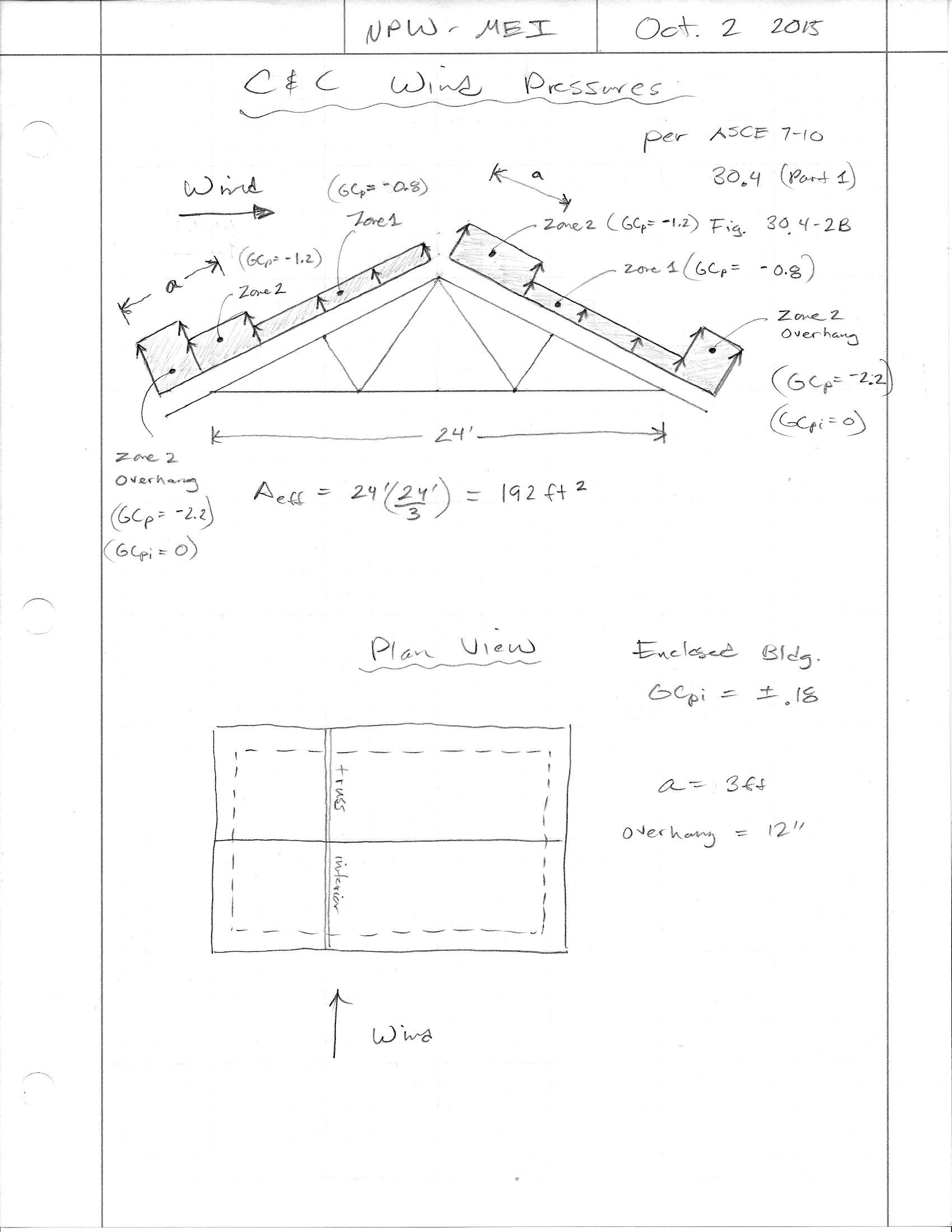The wind directionality with C&C wind loads is not made clear in the ASCE 7-10 however per the SEAW's Handbook for Wind Design the directionality should be considered when combining zones to determine the applied loads.
For a typical truss (interior) in a gable roof (4/12 pitch) I get the following:

My question is what to do with the overhang pressure on the leeward side? The standard does not mention whether overhang pressure are to only be applied to windward overhangs so I am assuming that it would also apply to an overhang on the leeward side but somehow this seems slightly counter-intuitive.
A confused student is a good student.
Nathaniel P. Wilkerson, PE
For a typical truss (interior) in a gable roof (4/12 pitch) I get the following:

My question is what to do with the overhang pressure on the leeward side? The standard does not mention whether overhang pressure are to only be applied to windward overhangs so I am assuming that it would also apply to an overhang on the leeward side but somehow this seems slightly counter-intuitive.
A confused student is a good student.
Nathaniel P. Wilkerson, PE
